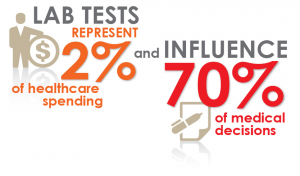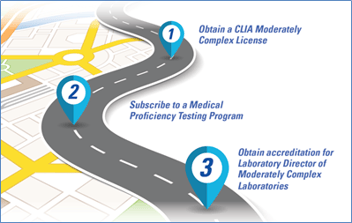
Efficiency in any workplace is vital—inefficiency costs money, wastes time, can affect quality, and can be very frustrating for employees and customers alike. In the healthcare environment however, inefficiency can negatively affect patients’ lives by delaying diagnosis and treatment. Point-of-care testing (POCT) can provide a faster turnaround time than testing performed in the central laboratory, which leads to cost/time savings as well as improving outcomes.
The Benefits
Why has POCT become more and more prevalent in recent years? When properly utilized, POCT has been shown to yield measurable improvements in patient care, workflow efficiency and even provide significant financial benefits. Not only does it make life easier for patients, who will not have to travel to another location for lab tests, but there are several other advantages for the provider:

The Challenges
The benefits are numerous, but POCT does not come without its challenges.
- Quality assurance can be difficult: testing is performed by clinical staff rather than individuals that have been laboratory-trained. Errors may result if staff does not understand the importance of quality control and quality assurance practices.
- Cost is also a roadblock to some—laboratory testing tends to be less expensive than POC testing, and providers typically require the support of a laboratory to meet quality and accreditation requirements.
Fact vs. Fiction
Some roadblocks aren’t truly roadblocks, but are fears due to myth and misinformation.
- Fear of a lab inspection is one of the most common reasons some physicians in the U.S. do not invest in CLIA moderate lab testing or choose to reduce testing to CLIA waived tests. These fears are due to a lack of knowledge of CLIA moderate complexity requirements, how to manage a lab, or lack of awareness of resources available to help the practice.
- Some providers also express concern about the time needed to manage the lab, staff turnover and continuity of lab management.
- Learning how to manage the data generated by POCT is another challenge for providers. As Lab Tests Online reminds readers, when tests are performed at the point-of-care, it is important that the results are incorporated into the patient’s health record.
In a recent article about lab inspections, Jim Poggi, Principal, Tested Insights, discussed several myths regarding POCT testing and presented the typical reality of the situation:

Venturing Ahead
To move forward successfully with POC testing, Poggi advises readers to be knowledgeable—knowledge is always power! Be aware of and understand CLIA requirements and available resources, including how suppliers may be able to help you organize and run your lab. Resources are available to help you with CLIA standards in the U.S, compliance manuals, know-how to write policies and procedures, quality control and more, including guides from the American College of Physicians and the American Academy of Family Practice. The American Association for Clinical Chemistry also recently published an article about Point of Care Testing Compliance that may offer useful tips and checklists.
 By using the right resources and talking to the right people, launching and/or maintaining efficient POC services is within reach!
By using the right resources and talking to the right people, launching and/or maintaining efficient POC services is within reach!
Learn more about Sekisui Diagnostics line of point of care tests here.



Share Article